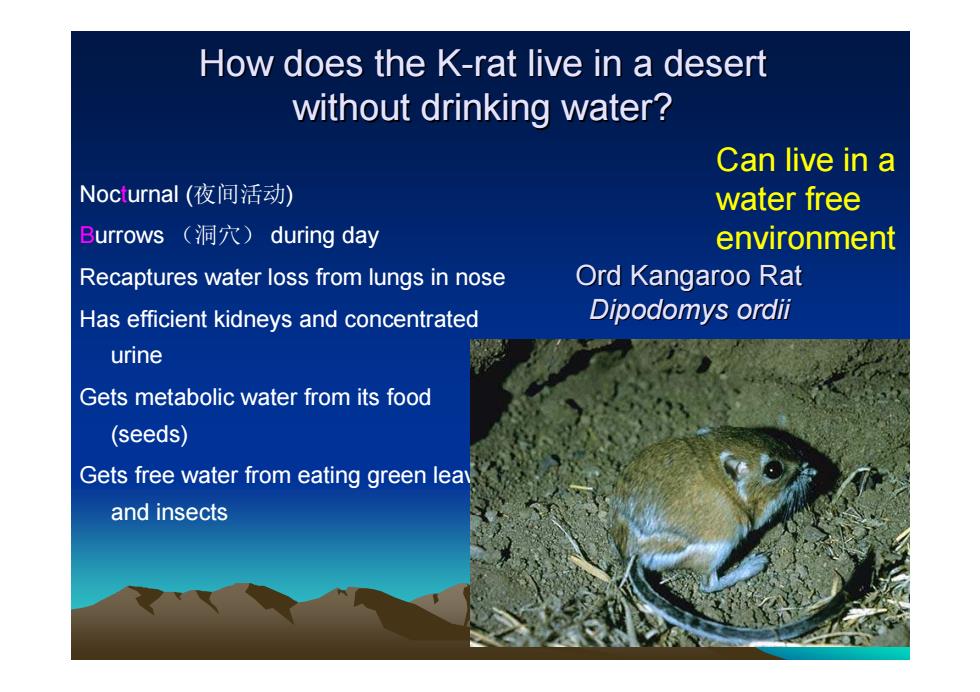
How does the K-rat live in a desert without drinking water? Can live in a Nocturnal(夜间活动) water free Burrows (洞穴)during day environment Recaptures water loss from lungs in nose Ord Kangaroo Rat Has efficient kidneys and concentrated Dipodomys ordii urine Gets metabolic water from its food (seeds) Gets free water from eating green lea and insects
How does the K How does the K-rat live in a desert rat live in a desert without drinking water? without drinking water? Nocturnal (夜间活动) Burrows (洞穴) during day Recaptures water loss from lungs in nose Has efficient kidneys and concentrated urine Gets metabolic water from its food (seeds) Gets free water from eating green leaves and insects Ord Kangaroo Rat Kangaroo Rat Dipodomys Dipodomys ordii Can live in a water free environment
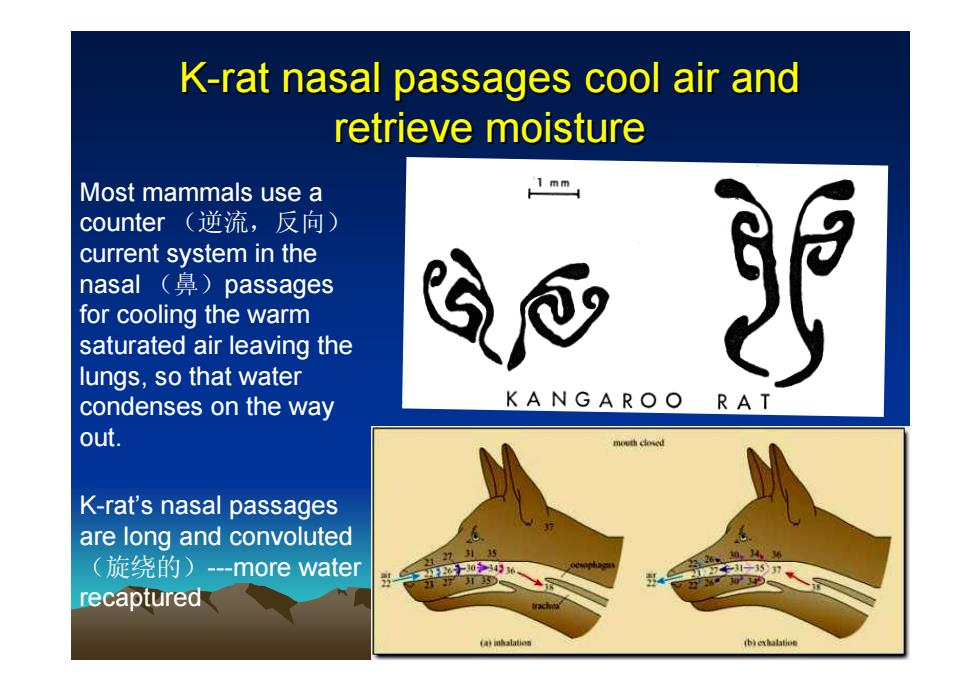
K-rat nasal passages cool air and retrieve moisture Most mammals use a 1 mm counter(逆流,反向) current system in the nasal(鼻)passages for cooling the warm saturated air leaving the lungs,so that water condenses on the way KANGAROO RAT out. mouth clescd K-rat's nasal passages are long and convoluted (旋绕的)-more water 于04)万 0 recaptured (inhalation (byexhalation
K-rat nasal passages cool air and rat nasal passages cool air and retrieve moisture retrieve moisture Most mammals use a counter (逆流,反向) current system in the nasal (鼻)passages for cooling the warm saturated air leaving the lungs, so that water condenses on the way out. K-rat’s nasal passages are long and convoluted (旋绕的)-more water recaptured
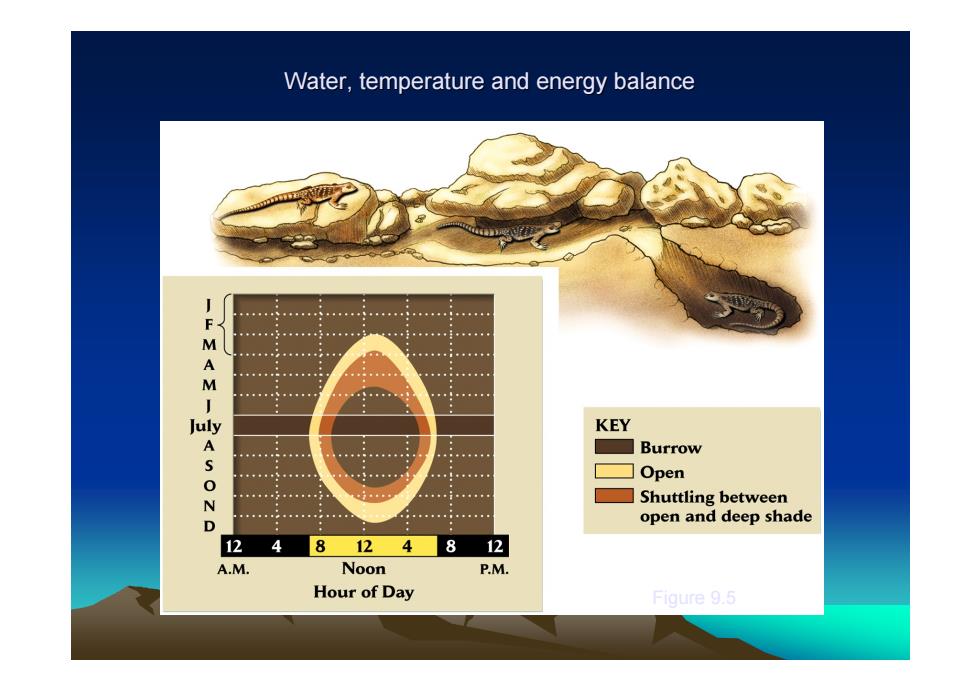
Water,temperature and energy balance July KEY A Burrow T E Open 0 e. N Shuttling between 0 open and deep shade 12 4 8 124 8 12 A.M. Noon P.M. Hour of Day Fiaure 9.5
Water, temperature and energy balance Water, temperature and energy balance Desert Iguana Ricklefs Figure 9.5
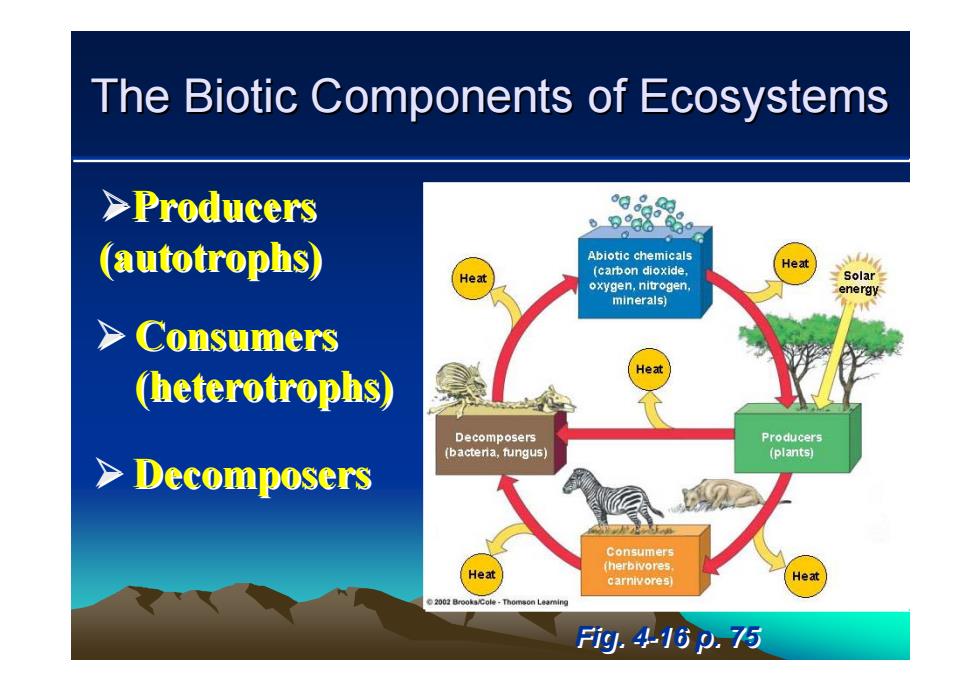
The Biotic Components of Ecosystems >Producers (autotrophs) Abiotic chemicals (carbon dioxide. Heat Heat Solar oxygen,nitrogen nergy minerals) Consumers He (heterotrophs) Decomposers Producers (bactera,fungus) (plants) Decomposers Consumer (herbivores. Heat carnivores) He at 2002 Brooka/Cole-Thomson Leaming F9.4416p.7⑤
The Biotic Components of Ecosystems The Biotic Components of Ecosystems ¾Producers (autotrophs) ¾Producers (autotrophs) ¾ Consumers (heterotrophs) ¾ Consumers (heterotrophs) ¾ Decomposers Decomposers Fig. 4-16 p. 75 Fig. 4-16 p. 75
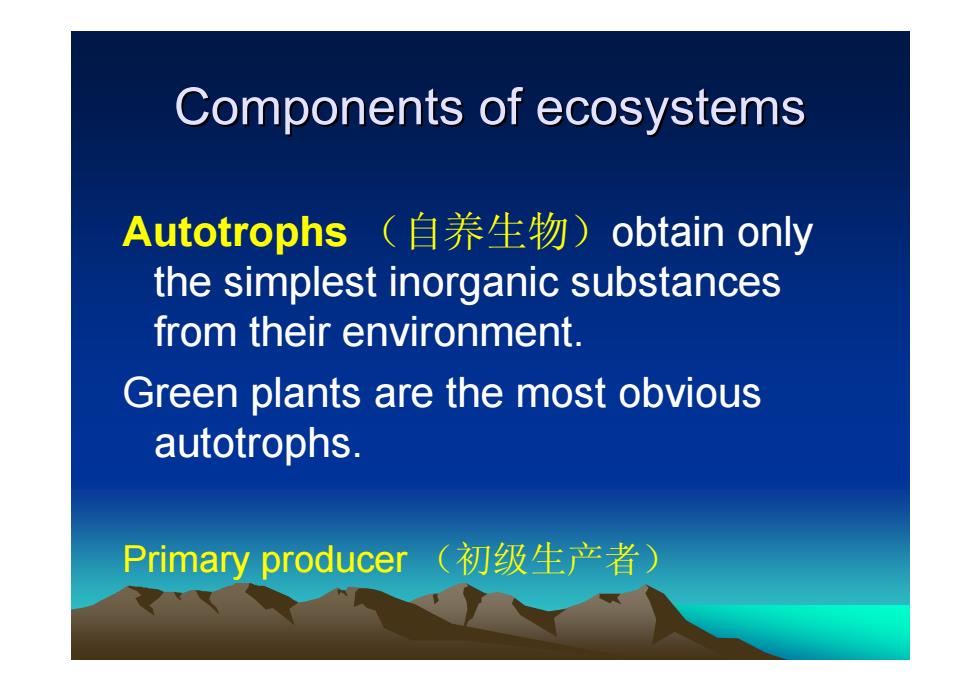
Components of ecosystems Autotrophs(自养生物)obtain only the simplest inorganic substances from their environment. Green plants are the most obvious autotrophs. Primary producer(初级生产者)
Components of ecosystems Components of ecosystems Autotrophs (自养生物)obtain only the simplest inorganic substances from their environment. Green plants are the most obvious autotrophs. Primary producer (初级生产者)